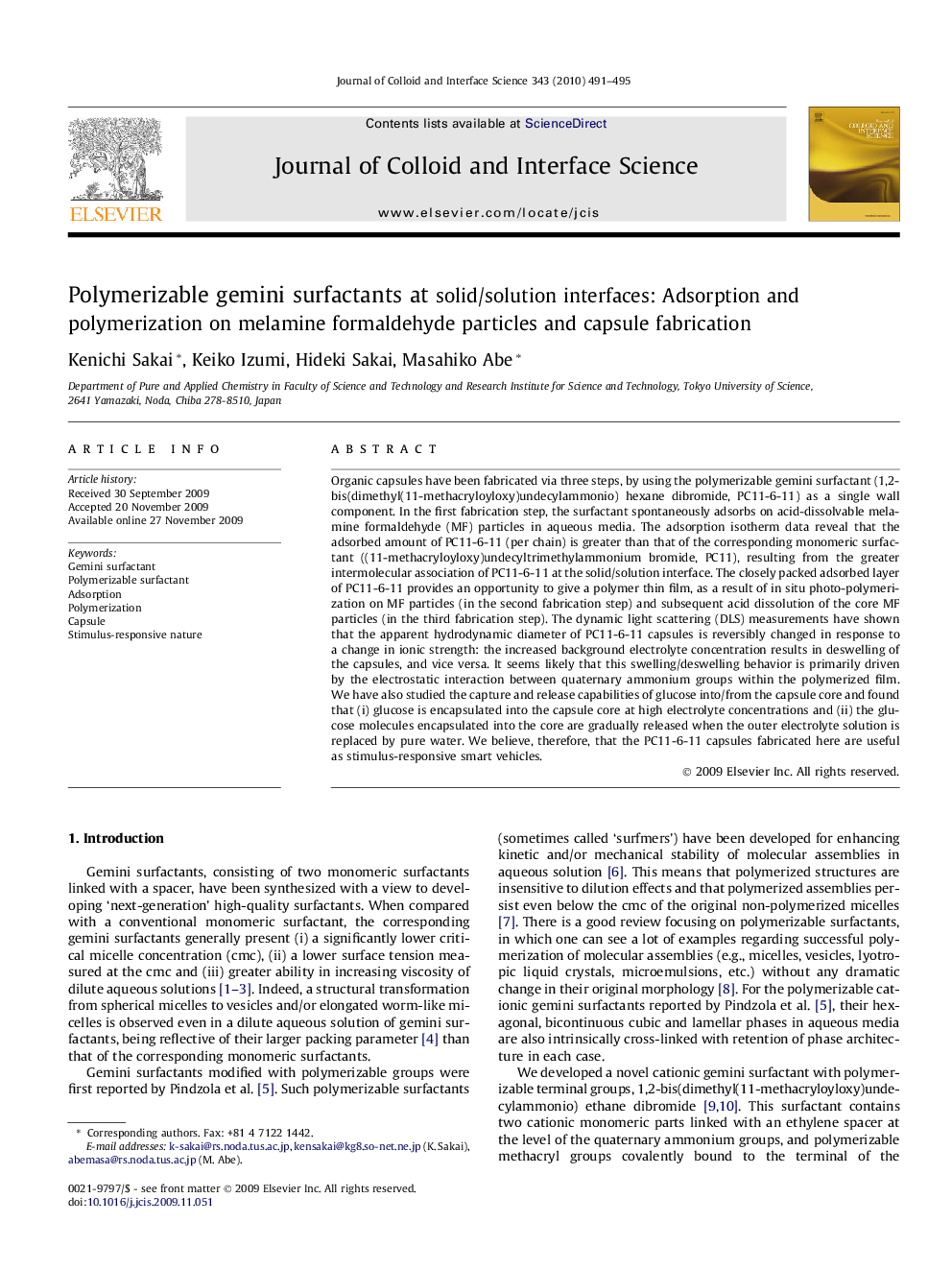| کد مقاله | کد نشریه | سال انتشار | مقاله انگلیسی | نسخه تمام متن |
|---|---|---|---|---|
| 609806 | 880631 | 2010 | 5 صفحه PDF | دانلود رایگان |

Organic capsules have been fabricated via three steps, by using the polymerizable gemini surfactant (1,2-bis(dimethyl(11-methacryloyloxy)undecylammonio) hexane dibromide, PC11-6-11) as a single wall component. In the first fabrication step, the surfactant spontaneously adsorbs on acid-dissolvable melamine formaldehyde (MF) particles in aqueous media. The adsorption isotherm data reveal that the adsorbed amount of PC11-6-11 (per chain) is greater than that of the corresponding monomeric surfactant ((11-methacryloyloxy)undecyltrimethylammonium bromide, PC11), resulting from the greater intermolecular association of PC11-6-11 at the solid/solution interface. The closely packed adsorbed layer of PC11-6-11 provides an opportunity to give a polymer thin film, as a result of in situ photo-polymerization on MF particles (in the second fabrication step) and subsequent acid dissolution of the core MF particles (in the third fabrication step). The dynamic light scattering (DLS) measurements have shown that the apparent hydrodynamic diameter of PC11-6-11 capsules is reversibly changed in response to a change in ionic strength: the increased background electrolyte concentration results in deswelling of the capsules, and vice versa. It seems likely that this swelling/deswelling behavior is primarily driven by the electrostatic interaction between quaternary ammonium groups within the polymerized film. We have also studied the capture and release capabilities of glucose into/from the capsule core and found that (i) glucose is encapsulated into the capsule core at high electrolyte concentrations and (ii) the glucose molecules encapsulated into the core are gradually released when the outer electrolyte solution is replaced by pure water. We believe, therefore, that the PC11-6-11 capsules fabricated here are useful as stimulus-responsive smart vehicles.
Organic capsules have been fabricated via three steps, by using the polymerizable gemini surfactant. Capture and release capabilities of glucose into/from the capsules have also been characterized.Figure optionsDownload high-quality image (178 K)Download as PowerPoint slide
Journal: Journal of Colloid and Interface Science - Volume 343, Issue 2, 15 March 2010, Pages 491–495